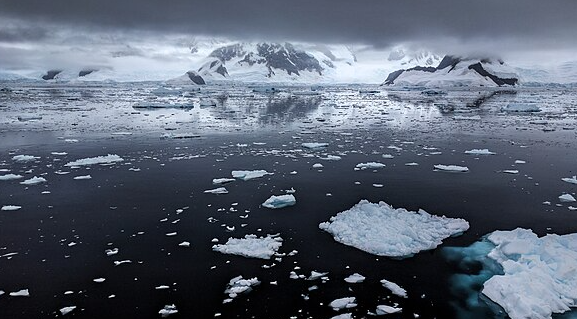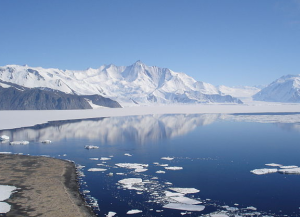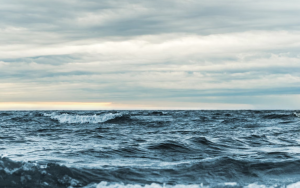
A Hidden Network Awakens Beneath Antarctic Seas
Bubbles are rising from the seafloor of Antarctica—and they aren’t just any bubbles. They’re plumes of methane, a greenhouse gas with eighty times the warming power of carbon dioxide over twenty years. Scientists thought such “seeps” were rare in the frozen south. But in a series of startling dives and shipboard surveys, researchers have discovered dozens of new seep sites along the Antarctic coast. Some appeared in places that have been studied for decades without any sign of activity.
This means something fundamental is changing in one of the planet’s most fragile frontiers. And the stakes go far beyond Antarctica.
The Big Picture: Why Methane Seeps Matter
Methane is one of the wildcards of climate change. We know it heats the atmosphere far more effectively than CO₂, but scientists still don’t have a full account of where all of it comes from. One big gap? The ocean floor.
In the Arctic, researchers have documented tens of thousands of methane seeps linked to the melting of permafrost, the thawing of gas hydrates, and the retreating of glaciers. The concern has always been: what happens when Antarctica—home to immense stores of frozen carbon—starts doing the same? Until recently, Antarctic seeps appeared to be a geological curiosity. Now, they look increasingly like an emerging system.
Local Glimpses, Global Ripples
At McMurdo Sound, near research bases that have been visited for generations, divers and remotely operated vehicles suddenly started spotting eerie white mats of microbes coating the seafloor. These mats are telltale signs of methane leaking upward. Even more striking, video cameras captured gas bubbles rising straight into the underside of the sea ice, a direct highway to the atmosphere.
Farther north, off Victoria Land, ship-based sonar picked up more than 28 bubble plumes in an area of seafloor barely 14 square kilometers. Many of these bursts were new, appearing in 2023 surveys but absent just two years earlier. That’s like walking the same farm field every year, only to suddenly find dozens of geysers spouting up from the soil.
If shallow Antarctic seeps behave like their Arctic cousins, much of that methane could reach the air before it dissolves in the water. That would add another fast-acting accelerator to global warming.
More Than Just Gas: Dead Zones and Diseased Stars
The seeps aren’t only releasing gas. They’re reshaping local ecosystems. Scientists found “dead zones” on the seafloor where once-thriving communities of sponges, corals, and sea stars have collapsed. At some seep sites, sea star wasting disease—a mysterious condition that turns healthy stars into dissolving goo—appeared for the first time in the Antarctic.
The pattern is sobering: at the seep center, life vanishes; at the edges, only hardy opportunists survive. This is the kind of ecological domino effect that could ripple outward, affecting how the Southern Ocean recycles nutrients, how food webs function, and even how much carbon the ocean can absorb.
Why Now? The Drivers Behind the Seep Emergence
So, what flipped the switch? The honest answer is: we don’t know for sure. But several suspects are in play.
- Melting Ice and Pressure Changes: As glaciers thin and retreat, they reduce the weight pressing down on buried methane hydrates. This can destabilize frozen stores and open cracks for gas to escape.
- Warming Waters: Even a tiny rise in temperature in the Southern Ocean can nudge fragile gas hydrates out of their stability zone.
- Geological Shifts: The Ross Sea sits near active volcanoes and fault systems, which could provide migration pathways for fluids and gases.
The methane measured so far appears to be microbial in origin—not volcanic—but the complex Antarctic geology could still be shaping how and where seeps emerge.
From Local Discovery to Global Urgency
The message is clear: Antarctica is not immune. For years, climate models treated Antarctic methane stores as relatively stable. This study shows that assumption may no longer hold.
Think of it as a sleeping giant beginning to stir. Beneath the Antarctic ice sheet lies an estimated 800 gigatons of methane and carbon locked in hydrates and subsurface reservoirs—amounts comparable to those in the Arctic. If warming trends destabilize even a fraction of this, the effects could reverberate worldwide, amplifying the very climate change that triggered the release.
This is what scientists call a positive feedback loop: warming leads to methane release, which leads to more warming, and so on.
A Call for Global Science
The team behind this discovery emphasizes one point above all: no single country can tackle this alone. Antarctica belongs to all humanity under international treaties, and so do the risks. Future research will need coordinated international efforts—diving expeditions, remote sensing, and long-term monitoring—to unravel how fast these seep systems are changing and what they mean for global climate.
As one diver described, spotting bubbles rising through the Antarctic seafloor felt like watching the ocean “exhale secrets we didn’t know it was keeping.”
Let’s Explore Together
Science has just uncovered a new piece of the climate puzzle, but the picture is far from complete. The discovery of Antarctic seeps is both a warning and an opportunity—to learn, to act, and to prepare.
What do you think?
- Could methane seeps become a defining factor in future climate predictions?
- How should the world balance Antarctic protection with the need for research?
- If you were on the team, what experiment would you run next?
Share your thoughts, and let’s keep this conversation bubbling.



